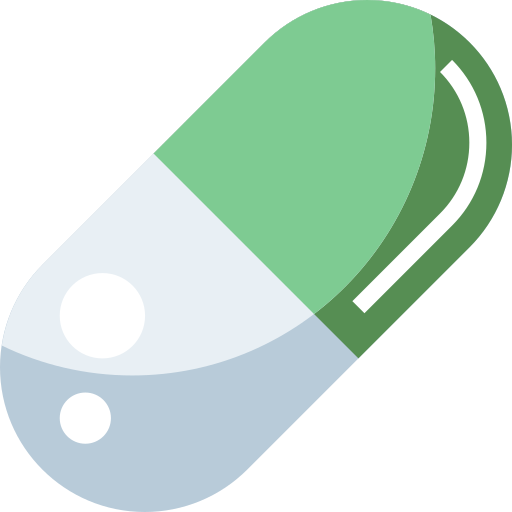
Tretinoin
10 mg
Radiant Pharmaceuticals Ltd.
Product Details
Description
Tretinoin capsules are indicated for the induction of remission in patients with acute promyelocytic leukemia (APL), French-American-British (FAB) classification M3 (including the M3 variant), characterized by the presence of the t(15;17) translocation and/or the presence of the PML/RARα gene who are refractory to, or who have relapsed from, anthracycline chemotherapy, or for whom anthracycline-based chemotherapy is contraindicated. Tretinoin is for the induction of remission only. The optimal consolidation or maintenance regimens have not been defined, but all patients should receive an accepted form of remission consolidation and/or maintenance therapy for APL after completion of induction therapy with Tretinoin.
As Tretinoin is metabolized by the hepatic P450 system, there is a potential for alteration of pharmacokinetics parameters in patients administered concomitant medications that are also inducers or inhibitors of this system. Medications that generally induce hepatic P450 enzymes include rifampicin, glucocorticoids, phenobarbital and pentobarbital. Medications that generally inhibit hepatic P450 enzymes include ketoconazole, cimetidine, erythromycin, verapamil, diltiazem and cyclosporine. To date there are no data to suggest that co-use with these medications increases or decreases either efficacy or toxicity of Tretinoin.
Virtually all patients experience some drug-related toxicity, especially headache, fever, weakness, and fatigue. These adverse effects are seldom permanent or irreversible nor do they usually require interruption of therapy. Some of the adverse events are common in patients with APL, including hemorrhage, infections, gastrointestinal hemorrhage, disseminated intravascular coagulation, pneumonia, septicemia, and cerebral hemorrhage. The following describes the adverse events, regardless of drug relationship, that were observed in patients treated with Tretinoin.
Pregnancy Category D. Tretinoin has teratogenic and embryotoxic effects in mice, rats, hamsters, rabbits and pigtail monkeys, and may be expected to cause fetal harm when administered to a pregnant woman. Tretinoin causes fetal resorptions and a decrease in live fetuses in all animals studied. Although experience with humans administered Tretinoin is extremely limited, increased spontaneous abortions and major human fetal abnormalities related to the use of other retinoids have been documented in humans. Nursing Mothers: It is not known whether this drug is excreted in human milk. Because many drugs are excreted in human milk, and because of the potential for serious adverse reactions from Tretinoin in nursing infants, mothers should discontinue nursing prior to taking this drug.
Tretinoin has potentially significant toxic side effects in APL patients. Patients undergoing therapy should be closely observed for signs of respiratory compromise and/or leukocytosis. Supportive care appropriate for APL patients, eg, prophylaxis for bleeding, prompt therapy for infection, should be maintained during therapy with Tretinoin. There is a risk of thrombosis (both venous and arterial) which may involve any organ system, during the first month of treatment. Therefore, caution should be exercised when treating patients with the combination of Tretinoin and anti-fibrinolytic agents, such as tranexamic acid, aminocaproic acid or aprotinin. The ability to drive or operate machinery might be impaired in patients treated with Tretinoin, particularly if they are experiencing dizziness or severe headache. Microdosed progesterone preparations ("minipill") may be an inadequate method of contraception during treatment with Tretinoin.
Pediatric Use: There are limited clinical data on the pediatric use of Tretinoin. Of 15 pediatric patients (age range: 1 to 16 years) treated with Tretinoin, the incidence of complete remission was 67%. Safety and effectiveness in pediatric patients below the age of 1 year have not been established. Some pediatric patients experience severe headache and pseudotumor cerebri, requiring analgesic treatment and lumbar puncture for relief. Increased caution is recommended in the treatment of pediatric patients. Dose reduction may be considered for pediatric patients experiencing serious and/or intolerable toxicity; however, the efficacy and safety of Tretinoin at doses lower than 45 mg/m2 /day have not been evaluated in the pediatric population. Geriatric Use: Of the total number of subjects in clinical studies of Tretinoin, 21.4% were 60 and over. No overall differences in safety or effectiveness were observed between these subjects and younger subjects, and other reported clinical experience has not identified differences in responses between the elderly and younger patients, but greater sensitivity of some older individuals cannot be ruled out.
There has been no experience with acute overdosage in humans. The maximal tolerated dose in patients with myelodysplastic syndrome or solid tumors was 195 mg/m2 /day. The maximal tolerated dose in pediatric patients was lower at 60 mg/m2 /day. Overdosage with other retinoids has been associated with transient headache, facial flushing, cheilosis, abdominal pain, dizziness and ataxia. These symptoms have quickly resolved without apparent residual effects. There is no specific treatment in the case of an overdose, however, it is important that the patient be treated in a special hematological unit.
Oral Retinoid preparations
Store at 15° to 30°C. Protect from light.
-
Support 24/7
Call us anytime -
100% Safety
Only secure payments